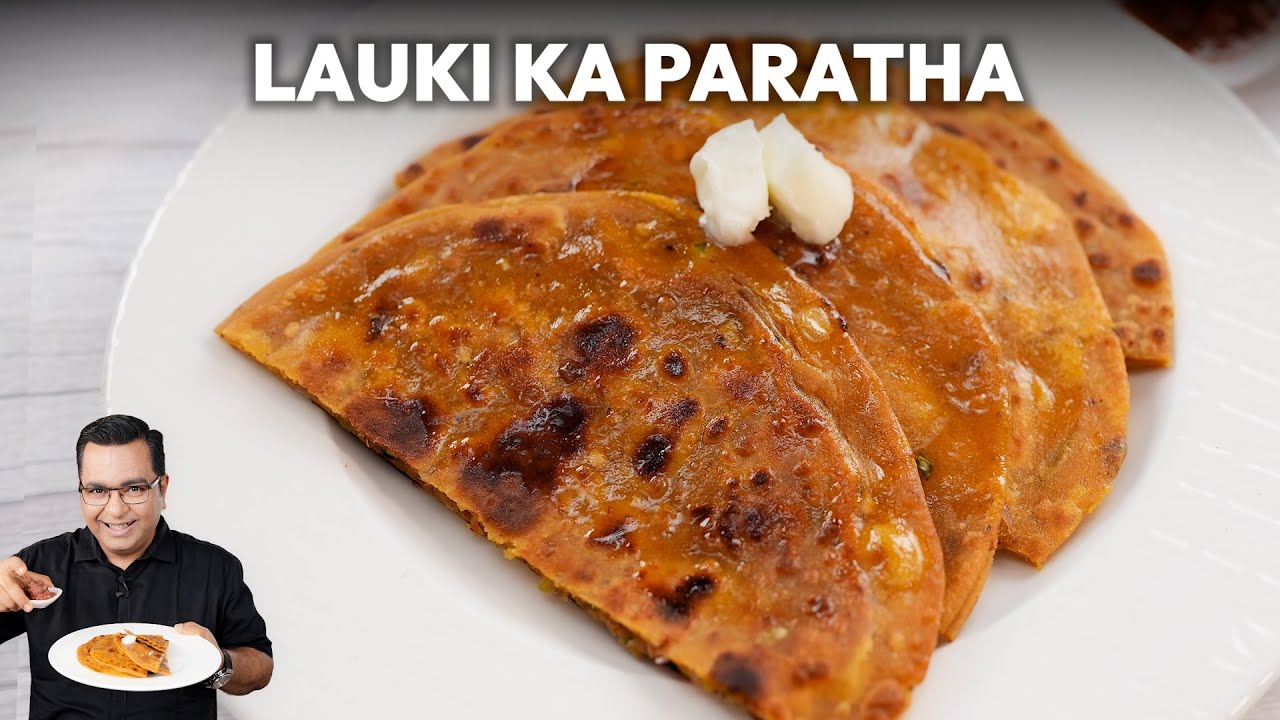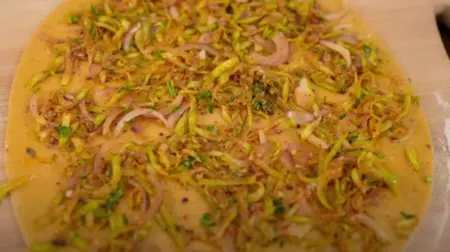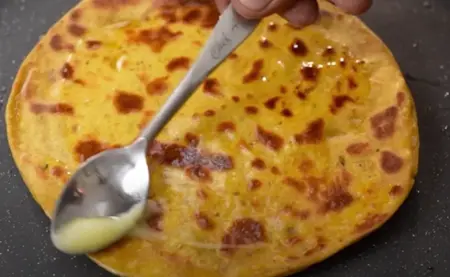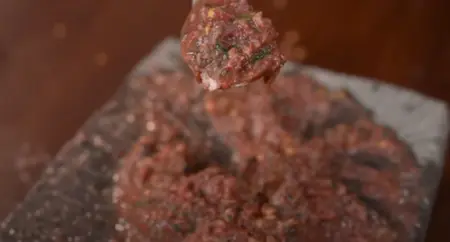
Lauki ka paratha

45mins

4

05mins
Introduction
I first encountered Lauki ka Paratha during a family gathering in my aunt’s kitchen. She was making it for breakfast, and the aroma of the spiced bottle gourd wafting through the house was irresistible. I remember being intrigued by the unusual combination of ingredients and the skillful way she prepared the dough and filling. That day, I learned not just how to make Lauki ka Paratha, but also discovered a new favorite dish that would become a staple in my own kitchen.
The story behind Lauki ka Paratha is just as heartwarming as the paratha itself. It's a traditional North Indian recipe that combines the subtle flavors of bottle gourd with a mix of spices, resulting in a paratha that is both nutritious and delicious. It's often prepared for breakfast or as a light meal, and its versatility makes it a favorite among many. The first time I made it myself, I felt a deep sense of accomplishment as the kitchen filled with that familiar, comforting aroma.
Ingredients of Lauki ka Paratha
For Dough:
- Wheat flour: 2 cups
- Besan (gram flour): ½ cup
- Ajwain (carom seeds): ½ tsp
- Chilli flakes: ½ tsp
- Black pepper powder: ¼ tsp
- Salt: 1 tsp
- Lauki juice: As required
- Water: As required
- Oil: 2 tsp
For Stuffing:
- Lauki (bottle gourd): 1 pc, grated
- Salt: ½ tsp
- Turmeric powder: ½ tsp
- Red chili powder: ½ tsp
- Onion: 1 pc, sliced
- Coriander: 1 tbsp, chopped
- Green chili: ½ tbsp, chopped
- Ginger: ½ tbsp, chopped
- Dry anardana (pomegranate seed) powder: 1 tbsp
- Ghee: 1 tsp
For Tomato Anardana Chutney:
- Garlic: 8-9 cloves
- Coriander leaves: A handful
- Roasted green chili: 2 pcs
- Dry anardana: 1 tbsp
- Water: A few splashes
- Roasted tomato: 2 pcs
- Salt: ½ tsp
- Red chili powder: ¼ tsp
Instructions of Lauki ka Paratha
Step 1: Prepare the Dough
- Combine Dry Ingredients: In a large mixing bowl, combine wheat flour, besan, ajwain, chilli flakes, black pepper powder, and salt.
- Prepare Lauki Juice: Grate the lauki and place it in another bowl. Add salt and turmeric powder to the grated lauki, and let it rest for 10-15 minutes to release its juice.
- Knead the Dough: Squeeze out the juice from the grated lauki into a separate bowl. Gradually add this juice to the flour mixture while kneading the dough. Add water as needed to form a soft yet slightly tight dough. Ensure the dough isn’t too sticky or too loose.
- Add Oil and Rest: Once the dough is smooth and pliable, add oil and knead for a few more minutes. Cover the dough with a damp cloth and let it rest for 15-20 minutes.
Step 2: Prepare the Lauki Stuffing
- Mix Ingredients: In a separate bowl, combine the remaining grated lauki with sliced onions, chopped coriander, green chilies, and ginger.
- Season and Mix: Add red chili powder and dry anardana powder. Mix well to combine all ingredients evenly.
- Add Ghee: For added richness, mix in a small spoonful of ghee.
Step 3: Assemble the Parathas
- Divide Dough: Divide the rested dough into equal-sized balls.
- Roll Out Dough: Roll each ball into a small circle on a lightly floured surface. Place a portion of the lauki stuffing in the center of the dough.
- Seal and Flatten: Bring the edges of the dough together to seal the stuffing inside. Pinch the edges to ensure the filling doesn’t escape. Flatten the dough ball and roll it out into a round paratha, ensuring the filling is evenly distributed.

Step 4: Cook the Parathas
- Heat the Tawa: Heat a tawa (griddle) over medium heat.
- Cook Paratha: Place the rolled paratha on the hot tawa. Cook until light brown spots appear on one side. Flip the paratha, drizzle oil around the edges, and cook until both sides are golden brown and crisp.

Step 5: Prepare the Tomato Anardana Chutney
- Grind Ingredients: In a blender, combine roasted tomatoes, garlic cloves, fresh coriander leaves, roasted green chilies, and dry anardana. Add a splash of water to blend smoothly.
- Season: Add salt and red chili powder to taste, and blend until smooth.

Step 6: Final Serving
- Serve: Serve the hot lauki-stuffed parathas with the freshly made tomato anardana chutney.
About the Recipe
Lauki ka Paratha is a delightful variation of the classic Indian paratha, where grated bottle gourd is mixed into the dough. This recipe brings together the mild, slightly sweet taste of lauki (bottle gourd) with a blend of spices that make every bite flavorful and satisfying. It's a great way to include more vegetables in your diet, especially for those who may not be big fans of traditional vegetable dishes.
Making Lauki ka Paratha involves a few simple steps: grating the bottle gourd, mixing it with spices, and kneading it into the dough. The key is to ensure that the grated lauki is well-drained to avoid soggy parathas. This recipe is not only easy to prepare but also very forgiving. You can adjust the spice levels according to your taste, making it a versatile choice for any meal of the day. Whether you enjoy it with yogurt, pickle, or a simple curry, Lauki ka Paratha is sure to become a favorite in your kitchen.
Cooking Tips
-
Drain the Bottle Gourd: To prevent the paratha from becoming soggy, make sure to squeeze out as much water as possible from the grated bottle gourd. This step is crucial for achieving the right consistency in the dough.
-
Spice it Right: Adjust the spice levels to your taste. You can increase or decrease the amount of spices like cumin, coriander, and chili powder based on your preference.
-
Rolling Technique: Roll the parathas gently to avoid tearing. If the dough sticks to the rolling pin, use a little flour to dust the surface.
-
Cooking on Medium Heat: Cook the parathas on medium heat to ensure they are cooked through and have a golden brown finish. High heat may cause the outside to burn before the inside is cooked.
Pairing Guide
Lauki ka Paratha pairs wonderfully with a variety of accompaniments. For a complete meal, serve it with a side of fresh yogurt or raita to complement its flavors. A spicy pickle or tangy chutney can add an extra kick to your meal. If you're looking for something heartier, try it with a simple vegetable curry or dal. For drinks, a cool glass of buttermilk or a hot cup of chai makes for a delightful combination, enhancing the overall dining experience.
Frequently Asked Questions
-
What is Lauki ka Paratha? Lauki ka Paratha is an Indian flatbread made with grated bottle gourd mixed into the dough. It is seasoned with various spices and cooked on a griddle.
-
Can I make Lauki ka Paratha ahead of time? Yes, you can prepare the dough and store it in the refrigerator for up to 24 hours. Cook the parathas fresh for the best taste.
-
How do I store leftover Lauki ka Paratha? Store leftover parathas in an airtight container in the refrigerator for up to 3 days. Reheat them on a griddle or in a microwave before serving.
-
Can I freeze Lauki ka Paratha? Yes, you can freeze cooked parathas. Place them in a freezer-safe bag with parchment paper between each paratha to prevent sticking. Reheat from frozen on a griddle.
-
What can I use instead of bottle gourd? If you can't find bottle gourd, you can substitute with zucchini or pumpkin, though the flavor will be slightly different.
-
Is Lauki ka Paratha suitable for a vegetarian diet? Yes, Lauki ka Paratha is entirely vegetarian and can be enjoyed by those following a plant-based diet.
-
How do I make the parathas spicier? Increase the amount of chili powder or add a pinch of black pepper to the dough mixture for extra heat.
-
Can I use whole wheat flour instead of all-purpose flour? Yes, whole wheat flour can be used for a healthier version of Lauki ka Paratha. It will give the parathas a more rustic texture.
-
What sides go well with Lauki ka Paratha? Lauki ka Paratha pairs well with yogurt, pickles, and a variety of vegetable curries. A simple raita or spicy chutney complements it perfectly.
-
How do I prevent Lauki ka Paratha from becoming soggy? Ensure the grated bottle gourd is well-drained before mixing it into the dough. Adding a bit of flour to the dough can also help absorb any excess moisture.
By incorporating these elements, you'll have a comprehensive and engaging post about Lauki ka Paratha that resonates with your readers and adheres to SEO best practices.
